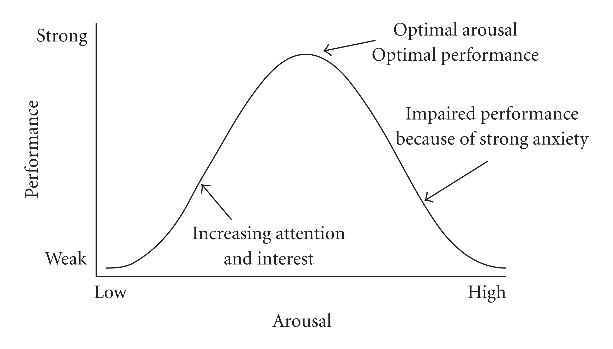The ideal learning environment to practise life-threatening situations
“Pressure makes diamonds”

Blog by Ebe Brons
You could compare a HEAT (Hostile Environment Awareness Training) simulation to a medical vaccination.
During a medical vaccination, you are injected with a weakened pathogen. Your body responds by generating antibodies without effectively falling ill. When a vaccinated person contracts the disease, later on, he will have built up resistance against the disease.
The educational version of a vaccination is to simulate a life-threatening situation in a safe learning environment. Participants are not exposed to a truly life-threatening situation (disease) but to an apparently dangerous situation in a safe learning environment (a weakened version of the disease).
A simulation must feel very realistic so that the participant will respond as if he or she was in a true life-threatening situation. Instead of using antibodies, the participant responds with new skills, effective behaviour and controlling thoughts and emotions to be able to deal with the dangerous situation.
During a training simulation, it is not about experiencing the dangerous situation itself. You can gain this experience out in the field, without training. The aim is the learn how to (sometimes indirectly) control the dangerous situation.
How do you compose an educational vaccination?
A medical vaccination is composed with great care. It should not contain too many or too few weakened viruses. The content with weakened viruses must be in line with the intended result. The same applies to an educational vaccination. The content of this particular vaccination is determined by the pressure put on the participant.
If the tension is too high during a simulation (the vaccination contains too many pathogens), the participant will not learn anything. The high tension prevents higher brain functions from being activated.
In the case of an excessively low dose situation, the participant will not feel the need to learn because the situation can be managed easily (the vaccination contains a dose of pathogens that is too low).
During an exercise, we have to find the ideal pressure for a maximum learning result.
Maximum learning in training simulations
According to Yerkes-Dodson Law, performances increase as physiological or mental tension rises. However, performances will improve up to a certain point and when the tension exceeds this optimum, the performances will decline.

(By Yerkes and Dodson, Hebbian – Diamond DM, et al. (2007). )
According to this law, a mild increase in stress hormones will in general lead to a maximum learning result.
How much pressure should you put on a participant during a simulation?
On average, a slight increase in pressure yields the best result. However, it does depend on the complexity of the task. If it concerns simple tasks, an individual will learn more effectively under high pressure. In the case of complex tasks, low pressure yields the best result.
If we were to translate this into a learning result, it is possible to learn a simple task under high pressure during a simulation. For complex learning objectives, low-pressure simulations are better to achieve a maximum learning result. Complex learning objectives are multiple learning objectives that are interconnected and depend on each other.
Which buttons can you push to regulate pressure during a simulation?
A 2007 study into stress hormones and cognition* showed that the following factors increase pressure;
• The extent of unfamiliarity with a situation. The more unfamiliar the situation, the more pressure the participant will experience.
• The extent of predictability. The harder it is to predict how a situation will progress, the more pressure the participant will experience.
• The extent of control (not controllable by the individual). If the participant experiences less control, pressure will be higher.
• The extent of social pressure in the group. If failure leads to a negative result for your position in the group, it will increase the pressure on the participant.
• Physiological factors such as ambient temperature, physical effort and impeded sight (e.g. night-time activity). The more these factors deviate from what a person perceives as pleasant, the higher the pressure. (This last factor was added by the author)
Example: Checkpoint simulation
One example of an exercise with simple learning objectives is a checkpoint simulation. The setting is a legal checkpoint with a security guard. The participants are approaching the checkpoint in a vehicle with the aim of passing it. They must be able to approach a checkpoint professionally (radio off, sunglasses off, ID ready, etc.).
The second learning objective is to negotiate with the officer to get through the checkpoint. During this simulation, it is okay for the tension to increase for a maximum learning result. If tension remains low, it will be too easy for the participants and they will learn little to nothing.
Example: Landmine incident
One example of a situation during which complex learning objectives are taught is a landmine simulation. The setting is that of a group of participants moving from A to B. Suddenly, they hear an explosion. They find an injured person on the roadside and they have to give him medical treatment. It seems the casualty stepped on a landmine.
They are hampered by a family member of the casualty, pushing them towards the casualty (and into the minefield). The participants receive learning objectives regarding radio communication, first aid, landmine awareness, personal tension control and calming down bystanders.
As there are many connected learning objectives, there is no need to increase the pressure too much. The hectic situation, the group process and the many decisions to be made by the group create enough pressure as it is. If the pressure is too high, participants will learn very little during this simulation.
Conclusion
These examples tell us that the correct composition of an educational vaccination optimises the return on education. The designer of the simulations first establishes if the learning objectives are simple or complex. The effect of the simulation can then be adjusted accordingly.
In practice, the simulation will have to be evaluated and adjusted several times to find the right pressure. A simulation in which the learning objectives are taught under the right pressure will enhance the ultimate objective, as the participants are well-prepared for dangerous situations out in the field.
*Lupien SJ, Maheu F, Tu M, Fiocco A, Schramek TE (2007). “The effects of stress and stress hormones on human cognition: Implications for the field of brain and cognition”.